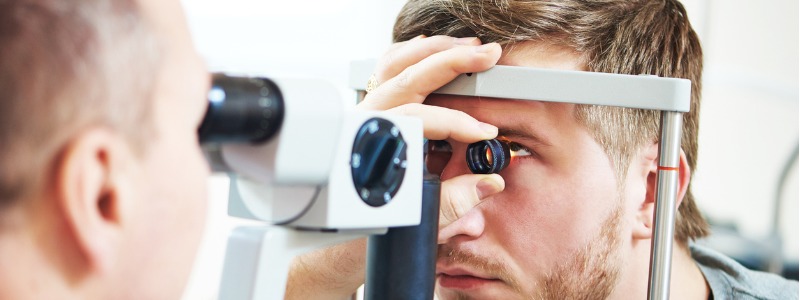Dry eye syndrome is a wide-ranging term to describe something caused by one of many possible triggers. The general feeling is the same in most cases: discomfort in the eyes because the normal protection of a tear film has been interfered with.
The process of giving the eyes this gentle protective coating is simple. The body creates a saline (salty) solution that also contains oils, and this is what we call tears when it forms globules which roll down out of the eyes. In addition to creating a protective barrier, this fluid washes away particles such as dust, so keeping the eyes clean.
So far, so simple. But why is dry eye syndrome becoming more prevalent in Australia?

The World is Increasingly Full of Eye Irritants
Dust and airborne pollution have been steadily increasing ever since the Industrial Revolution gave us machinery to disturb the earth. Road traffic stirs up dust made of dry soil and vegetable matter, and also the internal combustion engine produces waste products in the form of gases and tiny particles.
The same happens far above us as planes burn fuel in their engines. Even ships do it, their powerful engines expelling a lot of fumes.
Hot Air is not Just Air
Everything from fan heaters in cars to hairdryers sends warm air flying at us, and since motor vehicles enable us to travel fast, the air itself may not be moving but we are moving through it, with the same result.
Another Issue When Staring at Screens
Computers and particularly smartphones receive a lot of blame for all kinds of modern issues, from lack of family interaction to the inability to get to sleep. Here is another one: staring at screens can cause eye strain and can also contribute to dry eye syndrome.
That is because the blinking mechanism keeps eyes moist, and when we are engrossed in a small screen we tend to blink less – possibly as much as 60-66% less according to some studies. We don’t stop blinking altogether, but we do it less frequently, and therefore the eye’s main self-maintenance process is not carried out to the usual extent.
It is, of course, possible to blink deliberately, but if we are concentrating on the phone, or hard at work, catching up with something on our laptop, we are on auto-pilot with regards to our bodily functions, and blinking simply isn’t something we’re conscious of.
Some people use the 20-20-20 idea to combat screen-induced dry eye syndrome. This means taking a 20 second break every 20 minutes and looking at something 20 feet away, which is good for avoiding eye strain as well as dryness, but again, when you’re wrapped up in what you’re doing on the screen, such preventive routines can be difficult to stick to. Many people find setting timers every 20 minutes helps.
Whatever the cause of the issue in your case, eye drops can be used if dry eye syndrome is a problem for you.
There are also causes such as smoking or being in a place where others are smoking – which is less prevalent now than it used to be – and certain medications can cause dry eyes too, in which case it may be an unavoidable side effect of an important treatment.
It is important to remember, though, that this most basic of functions, keeping the eyes moist, is important in itself.
If you’ve been experiencing dry eye symptoms, book a vision test with us at Microprism Vision and we can help you determine the cause and give you tips to ease the irritation.
